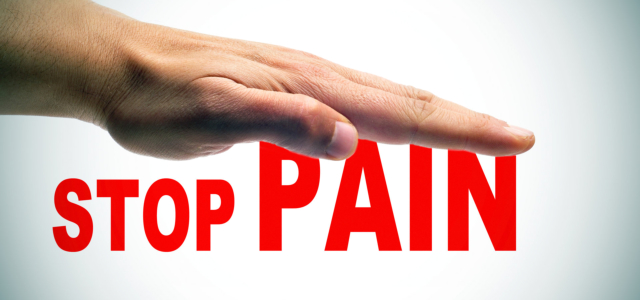Pain is described as an irritating sensation in humans caused by injury – perceived or actual – to body tissues. It produces both physical and emotional reactions to the person in pain. In a way, pain protects our bodies from harm. It is a kind of signal that it sends to the affected person to perform certain actions in this critical situation.
All of us, without exception, experience pain at different points of our lives. Pain is the number one reason patients seek medical help. The degree or level of pain we feel is subjective. Only the individual who experiences the pain can most accurately describe the severity of the pain, and not anybody else. Also, for the exact same pain in one’s body, the level or severity of the pain the person feels may be different, depending on the situation. A good example of this phenomenon is when an athlete gets injured during a game or fight. The athlete may not be bothered by the pain from the injury while the game or fight progresses but only complains about it after the contest. We may feel more or less pain in consideration of our mood, stress level, hunger, or activity.
Types of Pain and Their Causes
Though there are many sources of pain, they can generally be divided into two types – nociceptive and neuropathic pain.
Nociceptive pain – In this type of pain, injury or damage to the tissue initiates signals to the brain. These signals are relayed through peripheral nerves via the spinal cord. An example is a cut or a broken bone.
Neuropathic pain – This type of pain is caused by an injury or disease that affects the nervous system. This pain can sometimes occur spontaneously without obvious source of the pai.Shingles and diabetic peripheral neuropathy are examples of this type of pai.It is thye type of pain that occurs after a stroke or after the nerves are cut.
Pain Management
Depending on the cause of the pain, pain management can be simple or complicated. Pain coming from root irritation from herniated disk, for example, may simply be treated and alleviated through epidural steroid injection. The same condition, however, may not be solved immediately and may persist. In this case, a wide variety of techniques and services may be needed to treat the pain. These techniques and services may include the following:
- Medication management – The aim is to optimize drug therapy and improvement of the condition.
- Interventional procedures – It involves gaining access to the inside of a patient’s body, as in surgery.
- Chiropractic therapy – The treatment involves manipulative adjustments to the structures in the patient’s musculoskeletal system, like the spine, to improve nerve function.
- Physical therapy – The technique involves physical intervention therapy using mechanical force and movement.
- Acupuncture – This form of alternative medicine involves thin needles inserted into the body at certain “acupuncture” points.
- Psychological counseling – The counseling pays particular attention to the emotional and health-related aspect of the patient’s condition.
- Endorsement to other medical specialists – The heath care provider refers the patient to other experts in related fields for a more thorough treatment program.
The patient and the health care provider will work together and will go to great lengths and use these techniques and services towards an effective pain management because pain affects many aspects of the person’s daily life.
